It looks like you're using an Ad Blocker.
Please white-list or disable AboveTopSecret.com in your ad-blocking tool.
Thank you.
Some features of ATS will be disabled while you continue to use an ad-blocker.
24
share:
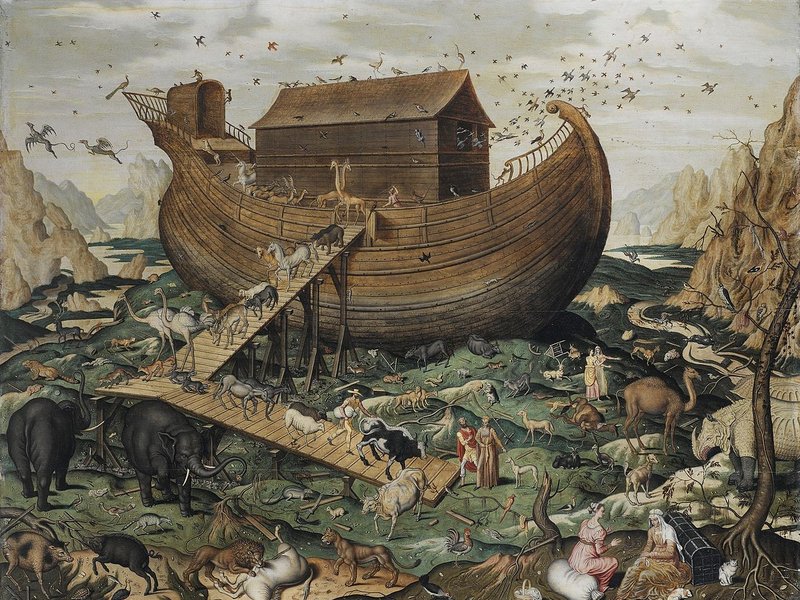
If you dig deep enough, say scientists, you can find some truth to legends and creation stories
Myths have fed the imaginations and souls of humans for thousandavis of years. The vast majority of these tales are just stories people have handed down through the ages. But a few have roots in real geological events of the past, providing warning of potential dangers and speaking to the awe we hold for the might of the planet.
These stories encode the observations of the people who witnessed them, says geoscientist Patrick Nunn, of the University of the Sunshine Coast in Australia, who has studied the links between natural hazards and stories told in the Pacific.
There's no way of telling which came first, the disaster or the story. But tales can provide clues to the past and even help fill in gaps in scientific knowledge about long-ago geological phenomena.
This is fairly well thought out synopses of possible explanations for some long held beliefs and Myths. I personally think the whole Noah/Sumerian flood myths were tales handed down of when the Persian Gulf was flooded out at or about 9,000 B.C. and having been handed down from generation to generation via word of mouth before the written word were exaggerated and embellished to the point that the 'Whole World' was flooded out not just a local event caused by the last of the Ice Age melt off.
Flood Myth
The Mesopotamian flood stories concern the epics of Ziusudra, Gilgamesh, and Atrahasis. In the Sumerian King List, it relies on the flood motif to divide its history into preflood and postflood periods.
In my thread The Lost Cradle of Civilization I went into more detail regarding this very real possibility.
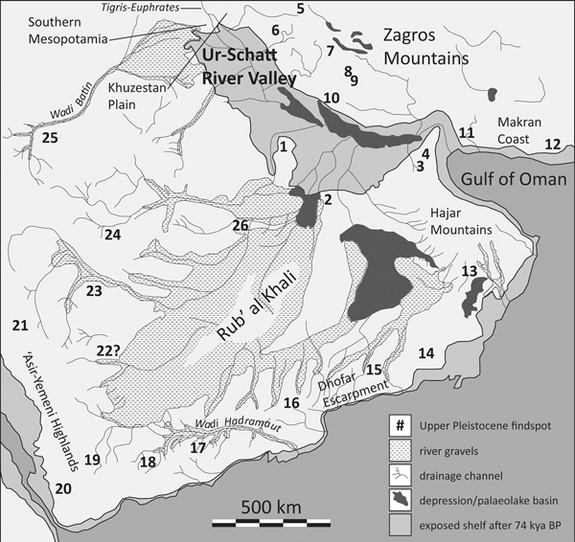
This map reveals the Arabian Peninsula with regions that were exposed as sea levels fell, and so became environmental refuges, possibly for some of the earliest humans out of Africa.
Lost Civilization beneath the Persian Gulf Confirms Genesis History of Humanity
In almost every culture and religion of the world lies a story of a lost civilization. The Greeks told the tale of a sophisticated island nation suddenly submerged. However, the Greeks were not the only people group to embrace an Atlantis-type legend; many cultures recounted the lost-city-beneath-the-sea scenario. The ubiquitous nature of these stories, accounts, and legends lends credence to the possibility that in the early days of humanity’s history a relatively advanced civilization was indeed lost.
Now, a research paper published in Current Anthropology provides scientific evidence for such a lost ancient civilization, evidence that confirms much of Genesis 1–11’s historical account of humanity’s early days.1 University of Birmingham archeologist Jeffrey Rose reports on the discovery, conducted over the past six years, of over sixty new archeological sites along the shoreline of the Persian Gulf. All of these sites are dated as older than 7,500 years. Rose states that “these settlements boast well-built permanent stone houses, long-distance trade networks, elaborately decorated pottery, domesticated animals, and even evidence for one of the oldest boats in the world.”2 In 2006, archeologist Hans-Peter Uerpmann of the University of Tubingen in Germany uncovered the remains of three different settlements that date between 25,000 and 125,000 years old at the base of Jebel Faya in the United Arab Emirates.
In his paper, Rose points out that during the late Pleistocene epoch (150,000 to 12,000 years ago) reduced sea levels periodically exposed the “Gulf Oasis.” The Persian Gulf receded to such a degree as to bring above the surface a landmass as large as, or larger than, Great Britain. Rose explains that this landmass was well watered by four large rivers flowing at the time: the Tigris, Euphrates, Karun, and Wadi Batin. Additionally, the region was watered by fresh water springs supplied by subterranean aquifers flowing beneath the Arabian subcontinent. Such an abundant and well-distributed supply of fresh water combined with the region’s warm weather would have supported a lush agricultural enterprise.
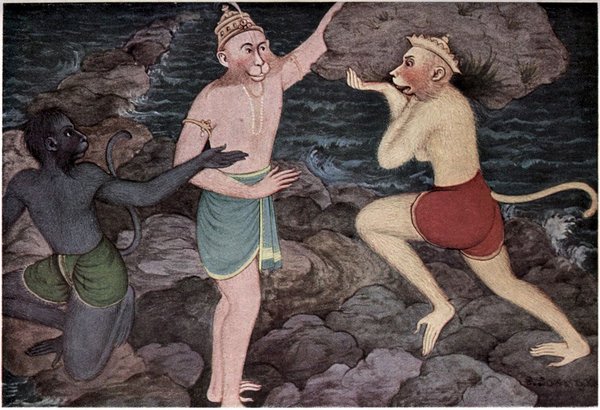
[atsimg]http://files.abovetopsecret.com/images/member/29166636e40d.jpg[/atsimg]
[atsimg]http://files.abovetopsecret.com/images/member/d61a05b5bcf5.jpg[/atsimg]
[atsimg]http://files.abovetopsecret.com/images/member/1aa261ad73a3.jpg[/atsimg]
[atsimg]http://files.abovetopsecret.com/images/member/46e19dcc2ef3.jpg[/atsimg]
So if you're interested in some speculation and possible scientific explanations here you go, enjoy.
As always
Stay tuned
edit on 4-4-2014 by SLAYER69 because: (no reason given)
nice.. .thank you! love reading about times of long ago, whether fiction or non-fiction..
Cheers
Cheers
reply to post by SLAYER69
maybe dragons, orcs, goblins, are also real! it' just that we cant see them!
someone needs to bring magic back to this planet!
peace
maybe dragons, orcs, goblins, are also real! it' just that we cant see them!
someone needs to bring magic back to this planet!
peace
The battle that created the lake in Oregon looks like a meteorite hit the place. Maybe that is why they say there was a battle between below and
above...
But I have to say... scientists saying myths can have a basis in natural events seems like stealing Velikovsky's work if they don't name him. :/
Still, it is nice if they can finally turn around and correct some interpretation of our past to make it more in accordance with modern and... ancient observations.
Like Velikovsky did... lol
But I have to say... scientists saying myths can have a basis in natural events seems like stealing Velikovsky's work if they don't name him. :/
Still, it is nice if they can finally turn around and correct some interpretation of our past to make it more in accordance with modern and... ancient observations.
Like Velikovsky did... lol
Thanks for the thread Slayer.
Normally I wind down before going to bed by stopping by this forum and checking out any interesting threads. Yours always have something to ponder, think about, wonder about, and just generally helps get my mind off of all the high tension stuff going on in other parts of ATS (politics, war, UFOs, Moon Hoaxs, etc, etc).
There are other people's threads here in Ancient & Lost Civilizations forum that I like to read too. I find most people's threads here interesting (does not mater if I think they are right or if I agree with them, I like reading thoughtful and well presented threads), however yours takes the cake each time.
You leave me with a good bed time story to think about once I log off ATS.
Thanks again!
Normally I wind down before going to bed by stopping by this forum and checking out any interesting threads. Yours always have something to ponder, think about, wonder about, and just generally helps get my mind off of all the high tension stuff going on in other parts of ATS (politics, war, UFOs, Moon Hoaxs, etc, etc).
There are other people's threads here in Ancient & Lost Civilizations forum that I like to read too. I find most people's threads here interesting (does not mater if I think they are right or if I agree with them, I like reading thoughtful and well presented threads), however yours takes the cake each time.
You leave me with a good bed time story to think about once I log off ATS.
Thanks again!
SLAYER69
It also talks about the land Bridge between India and Lanka. Whether this land bridge was a man made structure or just the top of a low lying mountain ridge that was eventually covered by the rising oceans that were later built upon makes no difference to me. But what is surprising is that they knew about it and it wasn't until NASA was able to show it that the myths genesis was revealed.
Just wanted to put in that this "bridge" is a series of sand bars and detrius deposited there by currents, not the top of any submerged ridge.
The "bridge" was cut through by the British back in the 1800's, IIRC, to facilitate shipping and subsequently filled back in through natural deposition.
The myth, of course, is a fairy tale that takes advantage of this geological formation's existence, as do many myths concerning geological formations (Giant's Causeway is an example of this.)
Harte
Tip o da hat to ya Slayer,u did it again.
One of the most intriguing geological myths?? I had came across happened to be among the now famous Dogon people and related ethnic groups such as the Bozo,Bambara and Maliniki, this concerns apparent knowledge of a meteor crash that formed lake Bosumtwi in Ghana,now it gets weird the meteor crash that caused the lake formation happened over a million yrs before modern humans existed,keep in mind that this isen't exactly Dogon ,Bozo,Bambara or related folks country as they lived in the savannah regions while this region is deep into the heart land of the Akan folks.
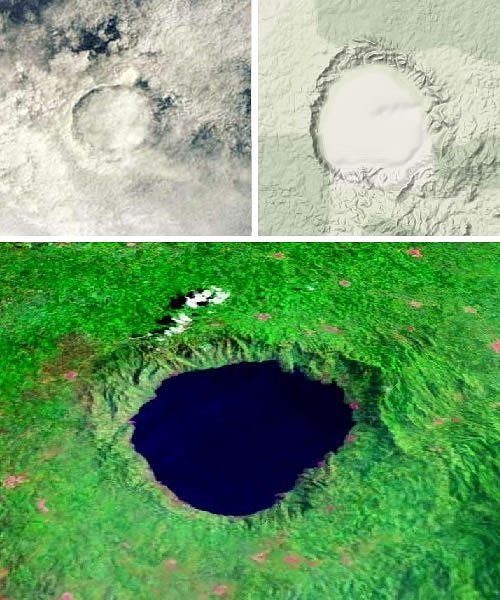
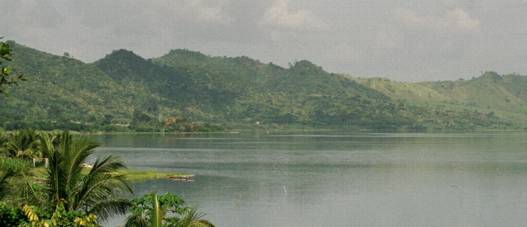
Lake Bosmtwi
byroneric.wordpress.com...
You may also want to look-up Robert Temple for more info on this and the Dogons.
One of the most intriguing geological myths?? I had came across happened to be among the now famous Dogon people and related ethnic groups such as the Bozo,Bambara and Maliniki, this concerns apparent knowledge of a meteor crash that formed lake Bosumtwi in Ghana,now it gets weird the meteor crash that caused the lake formation happened over a million yrs before modern humans existed,keep in mind that this isen't exactly Dogon ,Bozo,Bambara or related folks country as they lived in the savannah regions while this region is deep into the heart land of the Akan folks.


Lake Bosmtwi
Ironsmiths hold a special status in Dogon society. And, until recently, they were required to make an annual pilgrimage to Lake Bosumtwi in Ghana. Lake Bosumtwi is considered a sacred place and the location where the first ironsmith initiate learned ironsmithing from the Nummo. The lake is considered equally sacred by other groups including the Bambara and the Maliniki tribes who, according to the Dogon, originated with them from the same group.
The Dogon knew, in the 1940’s, that Lake Bosumtwi was formed by a meteor impact and they described it in great detail including the direction and angle of entry of the meteor. Modern geologists, however, did not even seriously speculate that the lake was formed by a meteor impact until 1979 largely because it is situated in a dense jungle forest that limited access to the lake. (see omzg.sscc.ru... ). The debate went back and forth for years as to whether or not the lake was formed by an impact until recent evidence positively confirmed its meteor origins dated to 1.07 million years ago.
byroneric.wordpress.com...
You may also want to look-up Robert Temple for more info on this and the Dogons.
edit on 8-4-2014 by Spider879 because: correction.
new topics
-
I thought Trump was the existential threat?
World War Three: 1 hours ago -
Interesting Video-UFO?
Aliens and UFOs: 2 hours ago -
Joe Biden Dabs Away Tears at Farewell White House Dinner
Politicians & People: 2 hours ago
top topics
-
Ed Dowd some good news
Medical Issues & Conspiracies: 17 hours ago, 7 flags -
Anyone like the Scorpions?
Music: 17 hours ago, 6 flags -
Joe Biden Dabs Away Tears at Farewell White House Dinner
Politicians & People: 2 hours ago, 6 flags -
I thought Trump was the existential threat?
World War Three: 1 hours ago, 6 flags -
Interesting Video-UFO?
Aliens and UFOs: 2 hours ago, 3 flags
active topics
-
-@TH3WH17ERABB17- -Q- ---TIME TO SHOW THE WORLD--- -Part- --44--
Dissecting Disinformation • 3374 • : 777Vader -
Interesting Video-UFO?
Aliens and UFOs • 6 • : chr0naut -
I thought Trump was the existential threat?
World War Three • 18 • : fringeofthefringe -
Petition Calling for General Election at 564,016 and rising Fast
Political Issues • 81 • : Bilbous72 -
Post A Funny (T&C Friendly) Pic Part IV: The LOL awakens!
General Chit Chat • 7825 • : baddmove -
Joe Biden Dabs Away Tears at Farewell White House Dinner
Politicians & People • 5 • : visitedbythem -
What if this is true?
2024 Elections • 26 • : VariedcodeSole -
International Criminal Court Issues Arrest Warrant For Netanyahu
Mainstream News • 51 • : FullHeathen -
Ed Dowd some good news
Medical Issues & Conspiracies • 34 • : Boomer1947 -
Russia Ukraine Update Thread - part 3
World War Three • 6887 • : Freeborn
24

